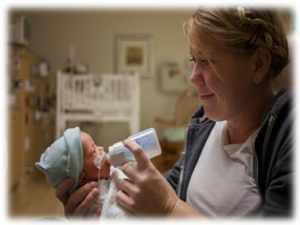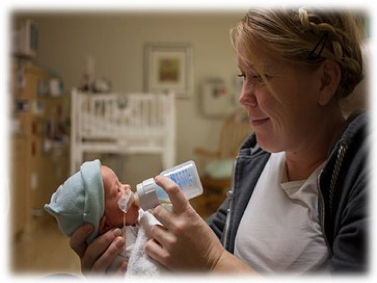
Although breastfeeding is optimal for feeding premature infants in the NICU, in the United States, most infants at some point during their NICU stay receive a feeding from a bottle. Thankfully, in the past ten years we have progressed to a more intentional feeding tool for these fragile infants during a period where brain development and experience are so critical. Many feeding specialists can remember a time when we had limited options and simply grabbed the feeding tool ‘in the cabinet’ to feed these babies, without questioning design or efficiency. Due to quality research published by Jackman and/or Pados (to name a couple) over the past few years, we now know that we need to examine nipple flow rates more closely, as there are a wide variety of nipple flow rates and considerable inconsistency.
It is also important to appreciate that infant bottle feeding is NOT just about the nipples. Taking into consideration the bottle system and physics of bottle feeding is just as important as the nipple flow rates. When a nipple is placed on a bottle vessel as in a traditional hospital bottle system and the infant begins to suck, sub-atmospheric pressure develops in the bottle vessel. Studies by Lau (2000) and Fucile (2009) have speculated, the presence of sub-atmospheric pressure in a bottle system may have negative effects on an infant’s feeding and may result in the infant expending more energy, causing the feeding experience to be less efficient. In fact, during their research when a vacuum-free bottle system was used, the premature infants exhibited more efficient feeding and more mature sucking skills than with the other bottle systems being tested.
What are the implications for our practice that can be extracted from these articles?
- During bottle feeding in the NICU, consider the bottle-nipple units as a system and how they function.
- Should a “Vacuum-Free” system be considered when bottle feeding infants in the NICU?
The Dr. Brown’s® Medical vacuum-free bottle system is the only bottle system used in hospitals with Zero Resistance™. In a recent study comparing typical hospital bottle systems and the Dr. Brown’s® Medical system, the Dr. Brown’s® bottle system consistently measured Zero sub-atmospheric pressure during liquid extraction (sucking). The hospital bottle systems exhibited the presence of sub-atmospheric (negative) pressure during the full liquid extraction. To learn more about Zero-Resistance™ and how it works, click here.

